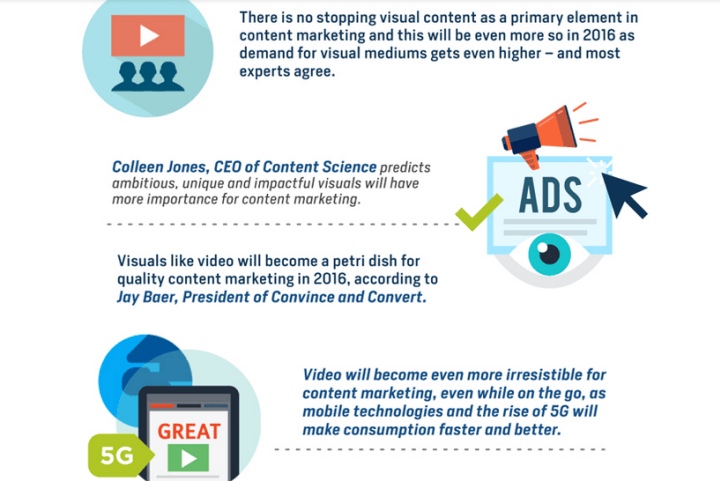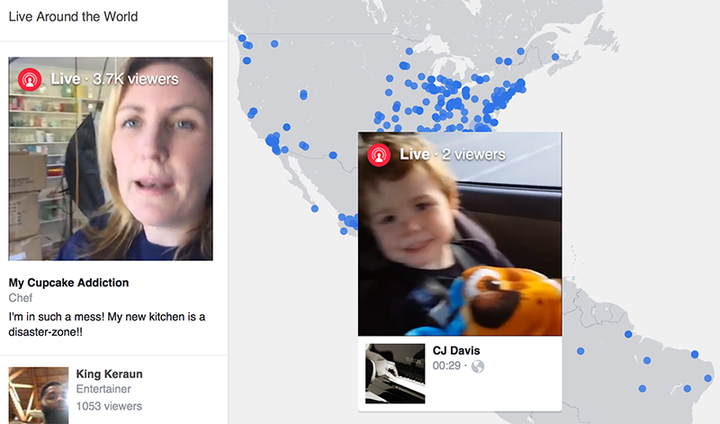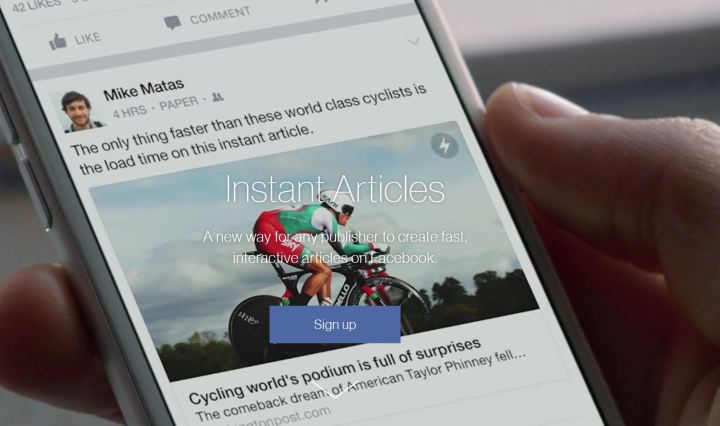Twenty years ago, Bill Gates said that “content is king.” His words turned into a global motto for content marketers, SEO experts, and social media specialists.
Are his words still valid today? We got rid of bad black hat link building strategies. We focused on good, relevant, high quality and shareable information. Thus, content as we know it is on top of its game.
The rise in technology put new marketing tools and platforms within our reach. It led content to become more than well-selected and well-presented words. It turned it into an instrument used to engage users, keep them close, and make them loyal to your brand.
The Google Trends graph below shows the evolution in time of link building and content marketing. The conclusion is simple: modern marketers need to earn their links. They also have to generate content to stay ahead of their competitors. That content should be more than “informative, entertaining and thrilling.”

Are there new content marketing trends this year we have to keep an eye on? Of course, there are! We will take a look today at seven of them. You might want to consider integrating these trends into your marketing strategies!
1. Video Content
We know a picture is worth a thousand words. Video content marketing is on the rise. We have now plenty of hot and innovative mediums to share this type of content on. A 2014 report found that the amount of video from people and brands in Facebook’s news feed had increased 3.6 times. According to specialists, by 2017, 70% of all Internet traffic will be online videos.

Video captures the users’ interest instantly and keeps them engaged. Video content is shareable and backed up by old and new platforms. If you want to step up your game this year think about this: serialized video content! Series builds interest and anticipation as you unfold a particular narrative and makes it a must-follow trend this year.
Is it really worth to consider using videos for promoting your business? Do you have enough resources to study and apply video content in your marketing?
The answer is simple: Yes, it’s worth it. Not only because everyone’s doing it but because the video is one of the most versatile and profitable digital marketing tools out there. Here are 8 reasons why you should use video marketing right now.
2. Live Streaming
Live streaming is a global phenomenon, and you just have to browse Twitch to understand how big it is. Facebook’s live streaming feature hasn’t fully taken off yet. But according to specialists in the field, it will be the hottest gig in the city by the end of the year. Here’s a map to discover Facebook Live sessions all over the world:

Savvy marketers won’t use live streaming platforms to show users a boring day at the office. They will keep them glued to the screen to see a live event. The advantages of company events’ live streaming are enormous. They build a greater audience. They develop a feeling of urgency in users who feel privileged to see exclusive live shows. They create user engagement and social media buzz. And, most importantly, they will make you stand out of the crowd.
3. User Generated Content (UGC)
According to research conducted by Reevoo, users and customers are your best marketers. In fact, 70% of consumers place user-generated content above generic written content. User-generated content is:
- reviews,
- recommendations,
- blog posts,
- ratings,
- comments.
UGC makes sense: your target audience speaks about your company. They will earn the trust of future target audience members.
Attract your users to create content for you! Display it on your website, social media network and even store. The good old word of mouth took the digital path, and it is working at its full potential. People are more willing to trust others who offer heartfelt recommendations. The Coca-Cola “Share a Coke” campaign worked. It enticed people to share their personalized Cola bottles on social media. This photo sharing idea led to an increase of 2% in U.S. sales.
4. Interactive Storytelling
As marketers, we shouldn’t ever forget to ask ourselves what people want. According to recent data, they want to engage in a story. To become a part of something larger. To be more than mere spectators to who companies sell stuff. It is an emotional and social game. The stakes grow higher this year. Interactive storytelling develops deeper connections with your audience. It builds brand reputation. It engages users in a meaningful relationship with your brand.
There are three points you need to focus on when you want to tell a thrilling story. They are emotion, message, and morale. One perfect example of well-executed storytelling is an older 2013 Guinness wheelchair basketball campaign. More than selling a product, Guinness reminded people how good it is to share a beer with friends – while helping someone in need.
5. Bring in the Influencers
The endorsement is not new in branding and marketing. Content marketing propelled by influencer marketing will skyrocket this year. A McKinsey study showed the following: brands who used ambassadors had higher retention rate. In other words, they got a 35% increase compared to paid advertisements. And they used influencers and trendsetters.
You can use social media to connect with important influencers in your field of interest. Use the same media to share with the world what the ambassadors have to say.
Blogs, social networks, and live events are three of the most important means to feature your brand influencers. They help you have people listen to them. A recent example is LuMee’s partnership with Kim Kardashian West for promoting their LED lighting mobile phone cases. Her social media selfies feature the cases and she also talks about them in her blog.
6. New Social Media
Marketers have underestimated Instagram, Snapchat or Vine. People see these platforms as personal playing grounds. They are useful to people who share content among them. Yet, Instagram offers attractive ads and marketing opportunities to businesses. And Snapchat is one of the most flexible and interesting platforms. When it comes to innovative content campaigns, of course.
So, mix your SM strategies and pick the right message for the right platform. You have Snapchat Stories, Facebook Instant Articles, Google Hangouts, LinkedIn, aggregators and so on..

Let’s crunch some numbers and make some predictions.Instagram
Instagram
- Instagram has around 400 million active users.
- If you are a Facebook-oriented marketer, you know you can run the same Facebook ads on Instagram as well. When opportunity knocks…
- If your target customers are adolescents, you should know that 32% of US teens cite Instagram as their favorite social network, whereas almost 90% of Instagram users are younger than 35 years old.
- If you have a business in the food industry, you should know that the favorite Instagrammed food is pizza.
- Speaking of video content and streaming, don’t forget that Instagram videos have an average of sharing of 24 hours.
Pinterest
- As of 2015, Pinterest accounts for approximately 100 million active users
- If your products or services address mostly the female population, Pinterest is a platform favored by 42% of all online women all over the world.
- If you haven’t explored this territory yet, you should know that an average of 66 percent of all content pinned by users belongs to brands.
- Recently, Pinterest announced a new visual search feature allowing users to click on an item on an image and open a new search. Visual search is perfect for marketers who want to promote and sell specific products. If you sell cars and post a picture of a busy street featuring that car, users will be able to click on the actual car in the photo. The click will lead them to other search results for the same product or similar ones.
- Some say that if you don’t have a LinkedIn company page you don’t exist. This is another way of saying that over 3 million companies have LinkedIn accounts. Yet, only 17% of US small businesses use LinkedIn at all.\
- LinkedIn uses the SlideShare app and the news reader app Pulse since 2012.
- They opened up their publishing platform to all members since 2014.
- A well designed LinkedIn company page improves search engine rankings and is SEO friendly.
- Recent data shows that 50% of LinkedIn members are more open and willing to purchase from a company if they engaged with it on LinkedIn.
- LinkedIn allows you to like and share content as a company; engage other members; target your message to a custom audience etc.
These are just some examples on how old but underused platforms can turn into veritable harbingers of company presence, image, and smart branding.
7. Everything Is Mobile
According to recent data, the number of smartphone users in the U.S. has reached almost 200 million. Modern marketers cannot overlook the power of mobile content marketing. If they want to still be in business. You will experience severe negative effects if your website is not mobile-friendly.
The mobile world is adaptable to all old, new and innovative communication mediums. You should adapt your content to mobile users. You can think way beyond videos, photos, and chat. You can tap into e‑book reading, live streams, news, interactive content.
L’Oréal’s eyeliner campaign on Snapchat is a great example. Users can take a selfie and add a sponsored graphic by using the app to take a front-facing photo. They will be shown in the eyeliner ad as a result. That’s the perfect integration of mobile and user-generated content.










